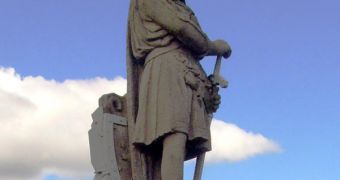On Sunday, The Guardian newspaper announced that a building company working on a housing project west of Glasgow, in an area called the Pillanflatt, found the possible remains of King Robert the Bruce of Scotland, one of the most famous monarchs to have ever ruled the country. He reigned supreme from 1306 to his death in 1329. The name of the region in which the possible foundations of his palace and numerous other artifacts have been found literally translates into the “pavilion of the great hero,” which has further led researchers to believe that they may have actually found the long lost tomb.
The name of the location corresponds in fact to accounts in ancient textbooks, which place the approximate location of the king's court around the area where the foundations have been discovered. Over the course of his reign, Robert the Bruce led the Scots in the Wars of Scottish Independence against England. Thus, when he died, the country was independent and defied its more powerful neighbor. The Scottish popular hero Braveheart, made famous in a 1995 movie, also fought under this king, and they achieved together a well-deserved place in the hearts of their people.
“The 1362 charter states that Robert the Bruce resided between Kings Park of Cardross and the lands of Pillanflatt, bounding the lands of Dalquhurn,” historian Stuart Smith tells the newspaper. The expert has been studying the Bruce family and its heritage for well over 35 years. Indeed, evidence from the scene of the discovery seems to confirm his suspicions. Following tests on various samples collected from the site, the Scottish Lime Center has established that the architecture dates back to the 14th century, and that the materials were most likely used to construct a chapel.
“We knew that Pillanflatt was where the king lived. Before we found the foundations, we had to guess where the king's house was,” the chairman of the Strathleven Artizans, Duncan Thomson, adds, as quoted by The Guardian newspaper. The Artizans is a group created for the very reason of promoting the area's links to Robert the Bruce and to urge more research into one of the most important parts of Scotland's history.
Everyone involved in the current project now awaits lab results to get back, confirming or denying the authenticity of the find. If the place is genuine, then it will most likely become a region of great interest and will be protected as such.

 14 DAY TRIAL //
14 DAY TRIAL //